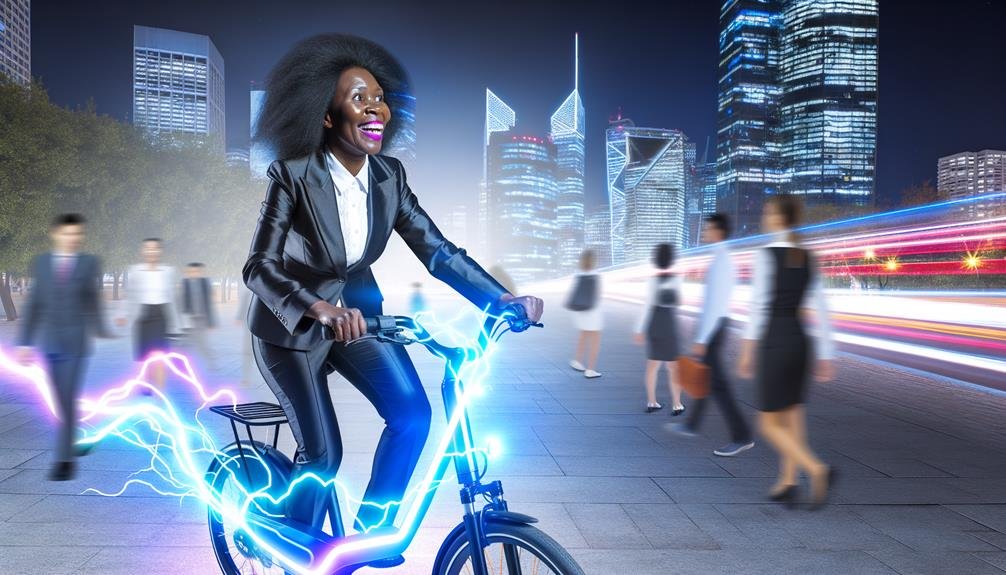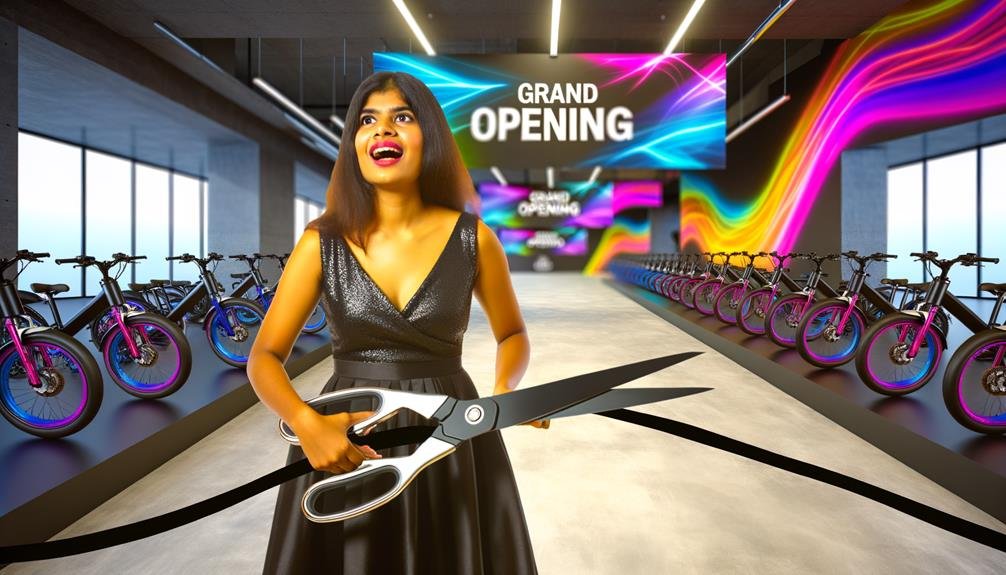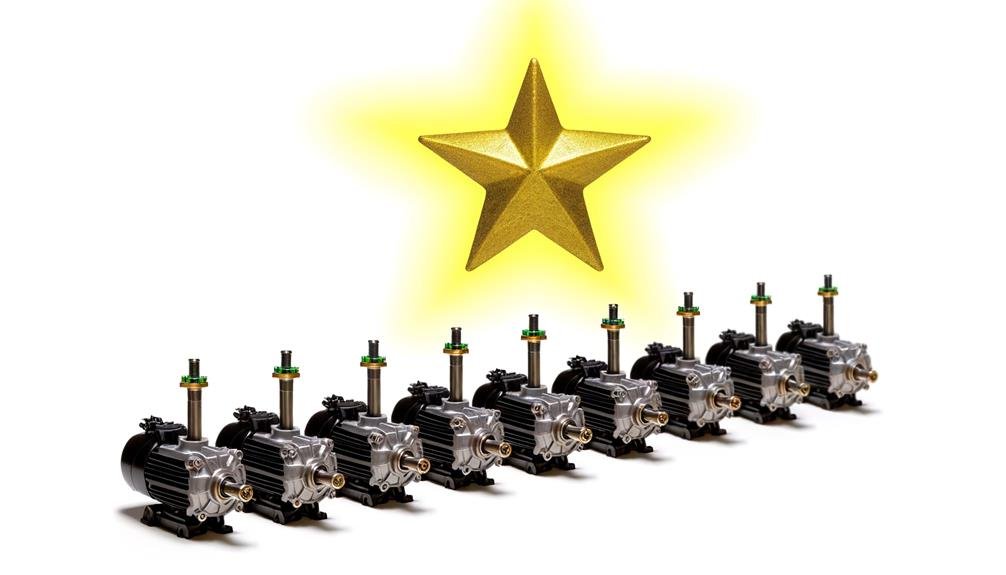Charles Miller is a veteran bike enthusiast with over 12 years of experience dealing with bikes as a mechanic. Despite immense love and expertise for...
Just as a conductor controls the speed of a train, we can manipulate how fast our electric bikes go through the use of a throttle. It's a fascinating feature that's starting to gain popularity in the e-bike industry, but not everyone's familiar with how it works or its implications.
As we navigate through this topic, we'll shed light on what a throttle is, its types, and the pros and cons of having one on your e-bike.
But one crucial question we need to address is – are throttles on e-bikes legal everywhere? Stick with us to unearth the answer.
Key Takeaways
- Hub motors, which provide instant power delivery, are often paired with a throttle for an effortless ride.
- Throttles allow riders to control the bike's motor power without pedaling, making them ideal for those with limited leg strength or facing steep inclines.
- Throttles offer precise control and a fun ride, but they can drain batteries faster and may provide inconsistent speed control.
- Choosing the right e-bike class and throttle type, such as twist or lever styles, can enhance the riding experience.
Understanding E-Bike Propulsion Methods
To fully grasp the power and performance of e-bikes, we must delve into the heart of their propulsion methods, particularly focusing on the two main types of motors: hub drive and mid-drive.
Hub motors are commonly found on many electric bikes. This type of motor is incorporated into the wheel's hub, providing a direct drive system that can deliver power instantly. It's best suited for flat terrains and is often paired with a throttle for an effortless ride.
Conversely, the mid-drive motor is mounted at the bike's center, offering a balanced and efficient propulsion method. It works in tandem with the bike's gears, providing optimal power output on varied terrains. The mid-drive motor often works with a pedal assist system, enhancing the rider's pedaling power and offering a more natural cycling experience.
Understanding these e-bike propulsion methods is essential as they significantly influence your riding experience. Whether it's the instant power delivery of a hub motor with a throttle, or the balanced and efficient pedaling of a mid-drive motor with pedal assist, your choice will define your journey on an electric bike.
We're part of a new cycling era, and the joy of belonging starts here.
Defining Throttle and Pedal Assist
Delving deeper into the mechanism of electric bikes, let's now explore the two critical elements that govern their functioning: the throttle and pedal assist.
In defining throttle and pedal assist, we first look at the throttle. The throttle on an electric bike is a handlebar-mounted device that, when engaged, drives the bike forward. This component allows riders to control the bike's motor power without pedaling, offering a self-propelled experience.
Conversely, pedal assist, also known as 'Pedelec,' is a system that requires your involvement. Unlike the throttle, pedal assist necessitates some pedal motion from you, the rider. It's all about teamwork between you and the bike's motor.
As you pedal, the pedal assistance system measures your input and adds a proportional amount of power. The more you pedal, the more assistance you get, and vice versa. This system typically offers multiple levels of assistance, allowing you to tailor your ride to your specific needs and preferences.
E-Bike Class System Explained
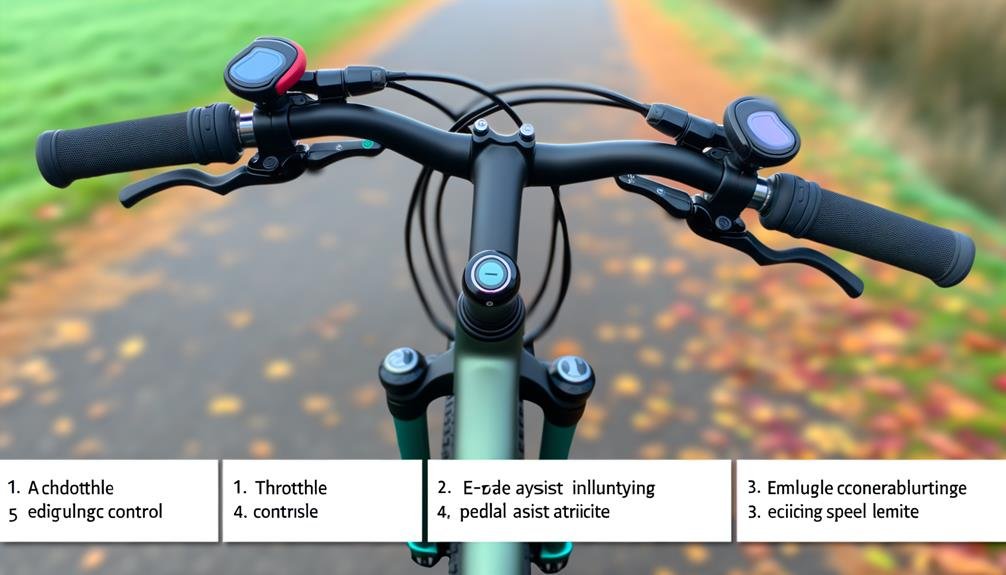
Understanding the class system of e-bikes, which is divided into Class 1, Class 2, and Class 3, can help you choose the right bike to cater to your specific needs and preferences. Each class represents a unique blend of power, speed, and control, creating a distinct riding experience.
The e-bike class system is defined by:
- Class 1: These e-bikes provide assistance only while you're pedaling, up to 20 mph. They lack a throttle, so the motor's power is entirely dependent on you pedaling. This class is great for those who enjoy active cycling but desire a bit of a boost.
- Class 2: This class is where the throttle comes in. Class 2 e-bikes have a throttle that can propel the bike up to 20 mph, regardless of pedaling. Ideal for those who need occasional rest periods while riding.
- Class 3: With Class 3 e-bikes, you get pedal assistance up to 28 mph, and they must have a speedometer. These bikes are perfect for speedy commutes.
- Throttle Type: Throttles on e-bikes can vary, with twist or lever styles being common. The right choice depends on your comfort and riding style.
Choosing the right e-bike class and throttle type can enhance your riding experience, letting you enjoy the sheer joy of riding an e-bike.
Throttle Vs Pedal Assist: Pros and Cons
Navigating the world of e-bikes often boils down to a key decision: choosing between a throttle and pedal assist system, each with its own set of advantages and drawbacks. Understanding their pros and cons is crucial to finding the right fit for your biking needs.
| Throttle | Pedal Assist | |
|---|---|---|
| Pros | Provides immediate power without the need to pedal, making it ideal for those with limited leg strength or facing steep inclines. Throttles, whether thumb or twist, offer precise control and a fun ride. | Pedal Assist systems, employing torque sensors, offer varying levels of assistance depending on your pedaling, providing a more natural ride. It's efficient in battery usage, allowing longer rides. |
| Cons | Throttles can drain batteries faster and may provide inconsistent speed control. Rear hub motors with fixed gearing might also be a drawback. | Pedal Assist requires continuous pedaling for assistance. It may not be as suitable for those with limited physical strength. |
| Ideal For | Riders seeking immediate power to propel the bike without needing to pedal. | Bikers desiring a traditional cycling feel with customizable assistance levels based on how hard they pedal. |
Exploring Motor and Sensor Types
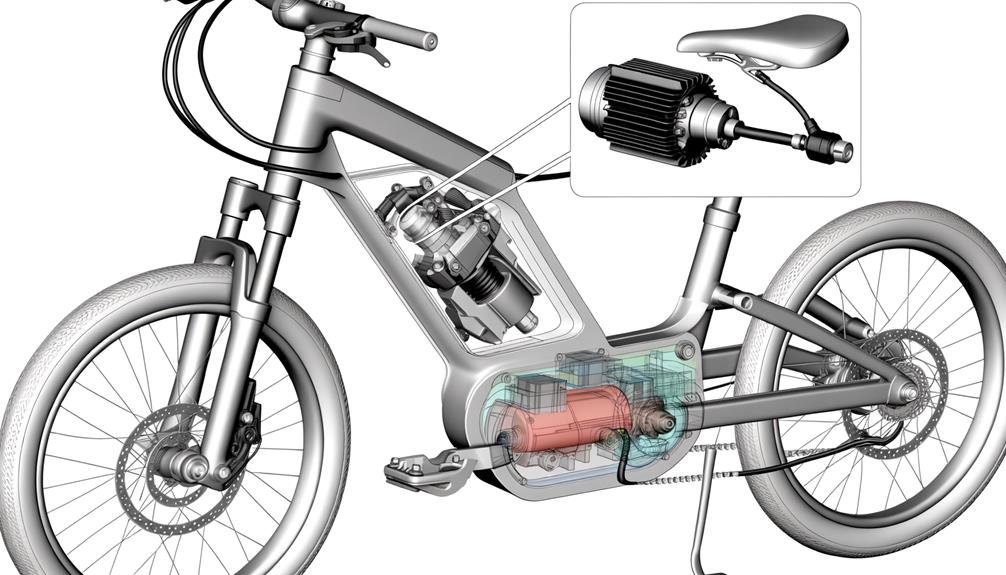
Let's dive deeper into the heart of an e-bike, exploring the various motor and sensor types that define the performance and characteristics of throttle and pedal assist systems. The e-bikes offer distinct riding experiences based on their motor and sensor configurations.
- Hub Motors: They're either front or rear-mounted and directly power the wheel. They're popular for throttle-based e-bikes due to their straightforward power output.
- Mid-Drive Motors: These are located at the bike's center, providing a balanced and efficient performance, ideal for e-bikes with a Pedal Assist System (PAS).
- Torque Sensors: High-end bikes use this kind of sensor. They measure the force you apply to the pedals, resulting in a more natural feeling, similar to riding a regular bike.
- Cadence Sensors: They detect when and how fast you're pedaling, not how hard. They're found in budget e-bikes and provide a more binary, on-off power assistance.
Frequently Asked Questions
Can You Ride an Electric Bike With a Throttle?
Yes, we can ride an electric bike with a throttle. Throttle control provides rider convenience and speed regulation. However, safety considerations, throttle mechanics, power utilization, and throttle drawbacks must be taken into account.
Can You Add a Throttle to an Electric Bike?
Yes, we can add a throttle to an electric bike. We'd need to consider throttle installation, motor compatibility, throttle varieties, safety measures, maintenance, cost implications, and potentially DIY methods. Let's explore this together.
What Is the Advantage of the Throttle on an Ebike?
We've found that a throttle on an eBike offers superior control, energy conservation, comfortable rides, and adaptable speeds. It enhances terrain adaptability, traffic navigation, and includes safety measures, making our rides enjoyable and secure.
What Class Ebike Has a Throttle?
Yes, we can find a throttle on a Class 2 eBike. We'll need to consider throttle types, positioning, responsiveness, safety measures, maintenance, legal aspects, and potential for customization when choosing our perfect ride.
Conclusion
In conclusion, whether it's the simplicity of a thumb throttle or the speed of a full twist, throttles on e-bikes offer an exhilarating ride, juxtaposing the sweat-inducing effort of traditional cycling with the effortless glide of electric propulsion.
However, it's crucial we acquaint ourselves with local laws, as they can vary. Understanding the nuances between throttle and pedal assist, and the e-bike class system, empowers us to make informed choices for a seamless, thrilling e-bike experience.

Charles Miller is a veteran bike enthusiast with over 12 years of experience dealing with bikes as a mechanic. Despite immense love and expertise for his Tacoma, he rides his Trek Ebike more. Anytime you meet him, you’ll either hear him talking about Bikes, or writing about all things bikes and cars on this blog.
More Posts
